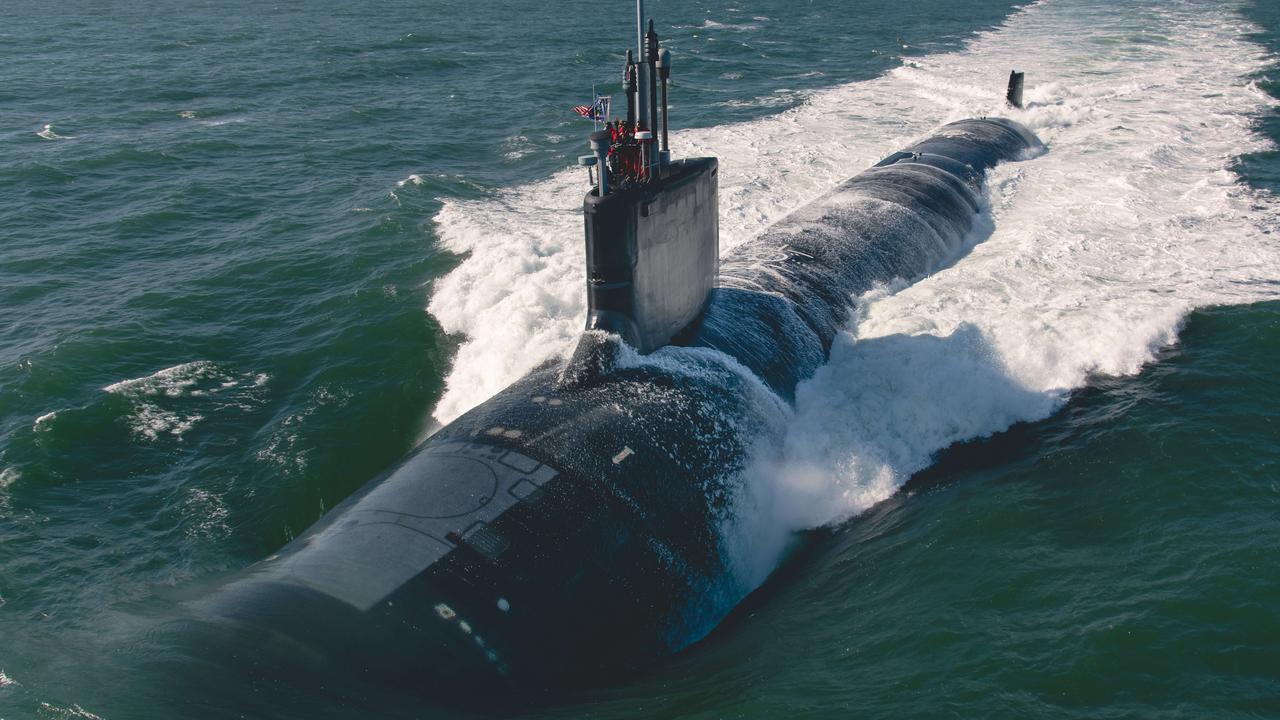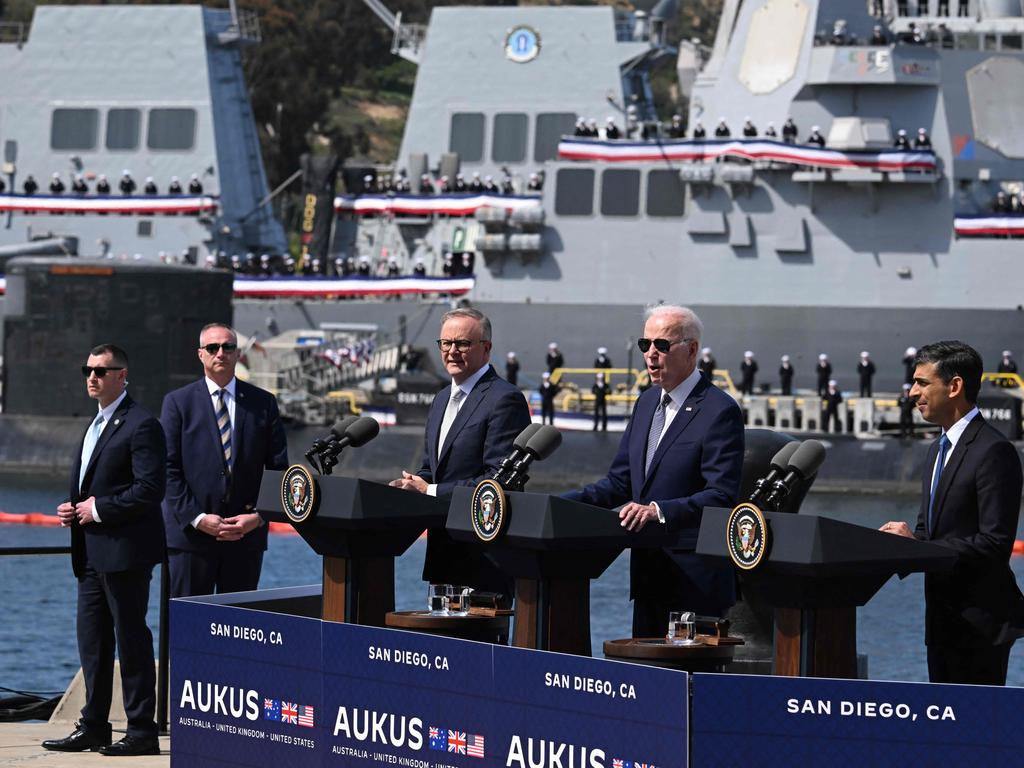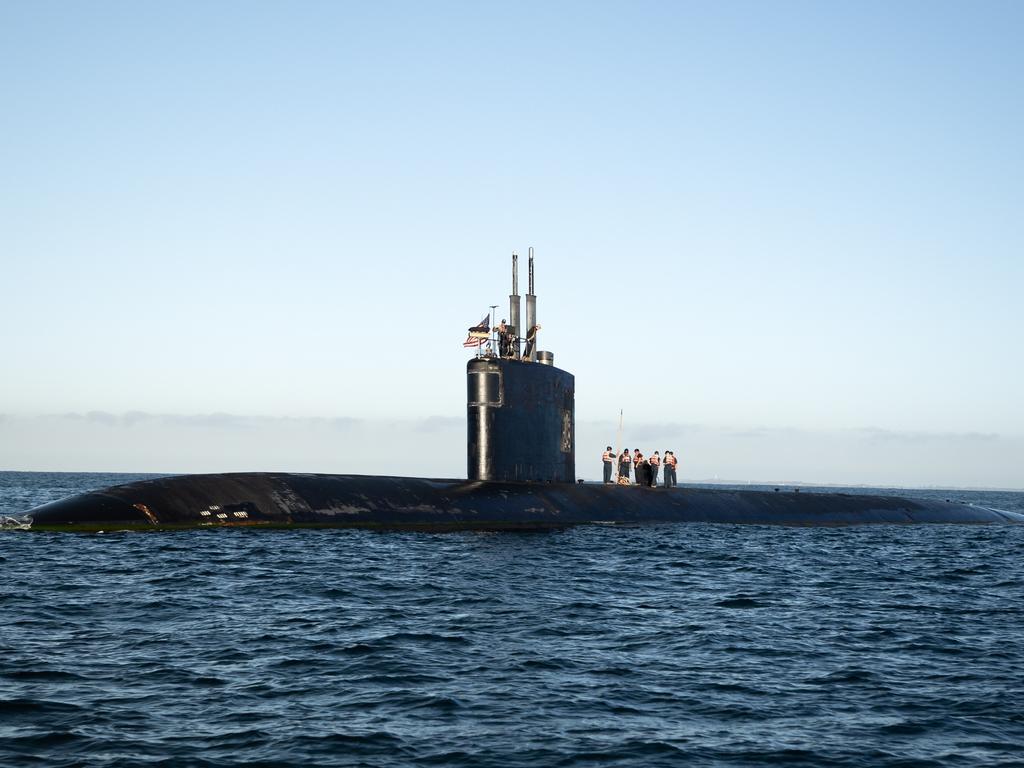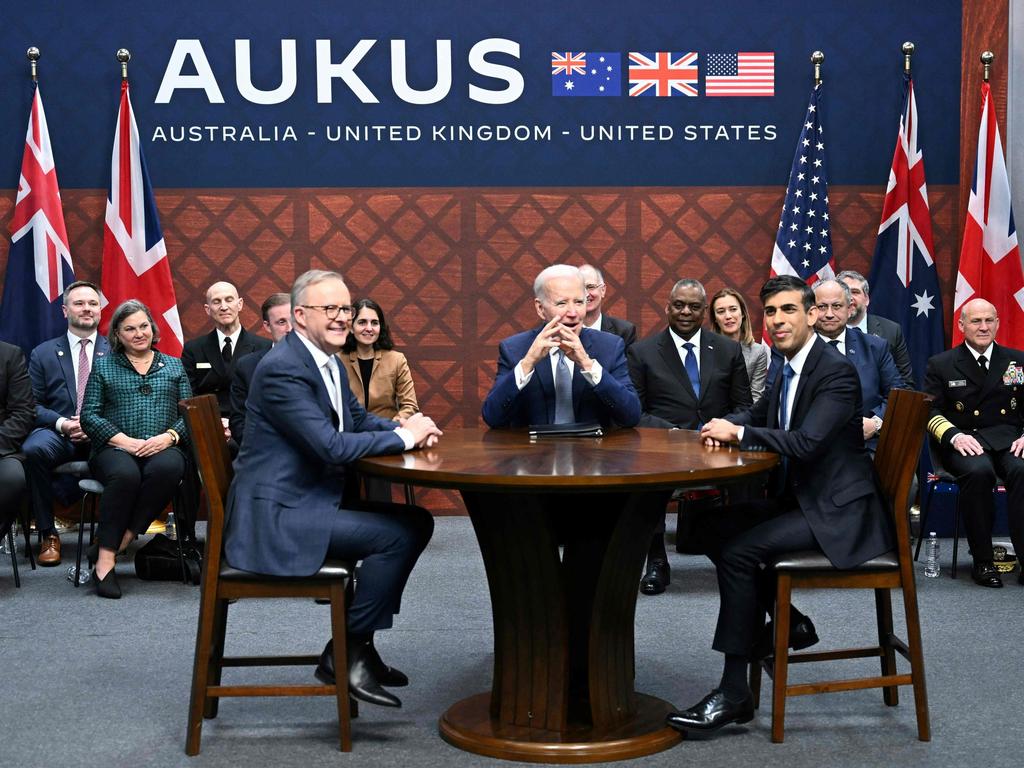Future national defence to rely on nuclear submarine stealth

This region extends from the northeast Indian Ocean to all of Southeast Asia (including the South China Sea) and the South Pacific. It is substantially the same region as defined in the seminal 1987 defence white paper for the defence of Australia doctrine. It should be central to the ADF’s force structure priorities.
This is where nuclear-powered attack submarines play a role because they are virtually undetectable, can remain submerged typically for 90 days, can arrive on target three times as quickly as our conventional Collins-class subs and can carry a large missile strike load. This applies more to the Virginia-class submarine because of its sheer size (9000-10,000 tonnes) and weapons load of up to 65 Tomahawk anti-ship cruise missiles and advanced torpedoes.
The current generation of Tomahawk anti-ship cruise missiles has an unclassified range of more than 2000km. That means a Virginia-class boat operating in deepwater trenches south of Indonesia or east of The Philippines can threaten military targets well into the South China Sea, and considerably farther afield if required.
In this context, it needs to be clearly understood that the US still dominates global underwater technology. Its submarines are much quieter than those of China and Russia, which have great difficulty in detecting US boats. The US also continues to retain a distinct superiority over China and Russia in anti-submarine warfare operations.
Given the recent outburst by former prime minister Paul Keating, it’s important to state that the scenario of a direct Chinese attack on Australia, or an attempt to invade our country, is not foreseeably the basis for Australia’s defence planning. For that to occur, the fundamental strategic order in Northeast Asia would have had to have collapsed.
Other potential adversaries of China – for instance, Taiwan, Japan and South Korea – are much closer and more strategically significant, and so more attractive targets for Beijing.
But there are other credible contingencies that cannot be so casually dismissed – especially if China’s military power continues to grow relative to that of the US.

They include escalating threats and coercion against us, with China seeking to “teach Australia a lesson”, as it did with communist Vietnam in 1979. It could seek to threaten our strategic space directly by aggressively operating within our 200-nautical-mile exclusive economic zone and inside our 12-nautical-mile territorial sea, or perhaps even threatening our offshore islands and territories.
But the long distances from China to our northern approaches make China’s military forces easy to detect and vulnerable to long-range missile strikes. Hence the importance of delivering long-range strike missiles from forward deployed covert locations.
There are two other credible contingencies for which we must prepare. First, more than 60 per cent of our overseas trade passes through the South China and East China seas. In the event of a major regional contingency – for example, a war between the US and China over Taiwan – we should take on the task, perhaps with Japan, of controlling and, if necessary, blockading the narrow straits through Southeast Asia on which China depends for 80 per cent of its oil imports. Nuclear-powered submarines are well suited to undertaking such demanding operations. This would be a more credible use of our limited military capabilities than contributing directly to high-intensity military operations across the Taiwan Strait.
Second, were China to get access to a military base nearby in East Timor, Papua New Guinea, Solomon Islands or Vanuatu, its capacity to project serious force directly against us would be considerably enhanced. Access to such a military base would enable China to threaten, among other things, our east coast centres of population and industry.
Successive Australian governments have been advised in classified defence guidance for a long time that we should have the military capability to destroy access to such a potential adversary’s bases.
This brings us to the difference between the Virginia-class and the British Astute-class nuclear-powered attack submarine and its successor SSN-AUKUS, which will not be delivered in Australia until the early 2040s.
There is little risk in acquiring the Virginia-class because it is a proven design and there are already 22 such submarines in service and a further 11 under construction. So, if we don’t make any expensive changes to the three to five Virginia boats we are considering, the risk will be very low indeed.
By comparison, the Astute-class, at 7000 tonnes, is smaller than the Virginia and, according to retired rear admiral Peter Briggs, more suited to the archipelagic waters to our north.
The Astute-class subs had a poor start because when their design began in 1999 Britain had not built a nuclear-powered submarine for almost 20 years. Key skills in design and engineering had been lost and this created significant challenges in getting the Astute program into the construction phase.
By August 2002, the British Ministry of Defence had to enlist the expertise of US nuclear submarine builder General Dynamics Electric Boat and a senior employee of that company became the Astute project director in Barrow-in-Furness in Britain.
Electric Boat also helped resolve many of the Astute’s design and software issues, as well as introducing radically different, leading-edge construction.
Britain will have to demonstrate to us that the UK-based follow-on to the Astute-class does not experience similar challenges. It also will need to manage efficiently the simultaneous construction in the same construction hall as the last two Astute submarines and four 17,000-tonne Dreadnought-class strategic nuclear ballistic missile submarines (SSBNs). These will have priority because they are Britain’s sole nuclear deterrent these days. The first SSBN is to enter service in the early 2030s.

The traditional military targets of nuclear-powered submarines have been other submarines and surface warships, as well as “close proximity” intelligence collecting. The latter was particularly important for gathering vital detailed technical intelligence against the Soviet navy in the Cold War. Both the US and Britain mounted such potentially dangerous – but successful – and still highly classified operations, as did Australia.
In October 2002 in the White House, US vice-president Dick Cheney told me: “We still remember the intelligence your submarines gave us in the Cold War on the Soviet navy.”
Cheney was talking about our Oberon-class submarines, which at only 2000 tonnes could go places “that our American submarines cannot”. The advent of uncrewed underwater vehicles presumably will take over this risky role.
In addition, modern nuclear-powered submarines have the relatively new role of being able to attack land targets with long-range strike missiles launched vertically or from their torpedo tubes.
Finally, I note that the former head of the Department of Foreign Affairs and Trade, Peter Varghese, has recently written that instead of nuclear-powered submarines we should acquire “many more conventional submarines with potent missile capabilities” for the defence of our continent and to deter potential attackers.
But Defence Minister Richard Marles stated recently that “the ability is growing” to detect a conventional submarine snorting to recharge its batteries. If that is so – and I remain to be convinced that will occur in the foreseeable future – purchasing “many more” conventional submarines may be a losing long-term investment for Australia.
Paul Dibb is emeritus professor of strategic studies at the Australian National University. He is a former Defence deputy secretary and former Defence Intelligence Organisation director.







Australia’s acquisition of nuclear-powered attack submarines will be key to the government’s new defence policy of deterrence. A policy of deterrence by denial involves acquiring sufficient strike capabilities to deter an enemy threatening us in our region of primary strategic concern.